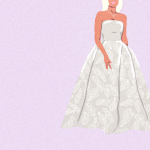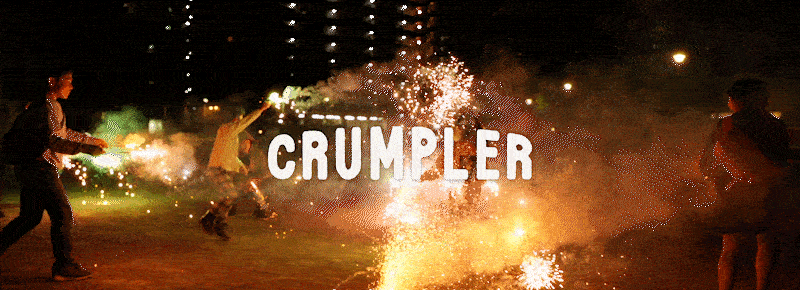Grit & Gravel is a Glass column that delivers you the daily discussions you hear circling around your social cliques. Alike friendly discussion, it offers holistic opinions to better understand this strange life that we live.
This edition is about Satanism – its attachment to celebrity culture and its usage among listeners as a tactic of fear mongering. It must be noted that while Doja Cat will be mentioned as a case study, the following article will not mention the emotional abuse allegations facing her current partner J Cyrus. While we are conscious of this news, they serve under a different conversation. Any mention to Doja Cat below will be under the umbrella of discussion around ‘Satanic Panic’ and her relation to this.
After a year of speculation and hype, Doja Cat’s devilish magnum opus Scarlet is here. I clasp it in my hand as I type this for you now. The warmth from its journey up all nine levels of Hell scorches my fingers with the marks of trickery and horrifying tales. It was given to me by bloodied figures that danced their way up. Their hair is drenched in blood that sticks to their cheeks. They play the record in another room which pierces and scratches so much that it too bleeds and trickles down on white carpet. What was thought would brainwash fans and lead us to prick our fingers to forge blood pacts (like those definitely real stories from 1980s America) is actually… just another album.
And many fans fell for it. Some are still falling.
What it all is truly, in other words, is a concept. A marketing technique. A persona for an album. It’s not proof that Doja Cat has turned to Satanism, as many believed. Apart from infrequent mentions of demons and the song title Skull And Bones being a direct reference to Yale University’s secret society, there’s nothing deviant about the album at all. It’s not a sequence of brainwashing that will turn us bloody eyed. But that hasn’t stopped a wave of panic flooding through.

‘Satanic Panic’ resurfaced in the late 2010s to be used against those – mainly high-profile celebrities – who are believed to have sold their soul to the Devil. The term was used around 1983 in the American media as a threat against individuals as fears grew of an underground network of devil worshippers that were supposedly working to infiltrate day-care centres. All of which has been disproved, but fear has held on to the public.
Surely logic would set in 40 years on, but apparently not. Evidence for this Doja Cat conspiracy stems from her recent branding, both in her music and outside. One look at the artist’s Instagram profile, recent discography, and new music videos shows connotations of demons, the Devil, and illuminati-like elements that allude to Satanism.
Posts are uploaded on social media sharing their “evidence” that confirm her transformation. Comments long for the ‘old Doja Cat’ and wish for her return. It’s hard to ignore.
What’s far more interesting, however, is that those who are inviting these accusations are our age. Young people, who accuse their parents and grandparents of being gullible to misinformation online, are now the initiators of fear mongering, and are feeding into it directly. A simple search on TikTok for ‘Doja Cat Satanism’ shows videos from Gen Z and Millennial users with views that reach between 3 and 12 million.
This became rather interesting to me. As a fan of Doja Cat’s music, I automatically assumed this was all a marketing strategy. She’s known to play tricks on her following, so wasn’t this just another one of her jokes?
Even then, other artists have had drastic changes to their branding and genre. Examples include Miley Cyrus going from Disney to pop to rock, Taylor Swift’s everchanging discography, and Poppy first appearing as a sickly-sweet pastel dream to now focusing on heavy metal. Doja Cat’s change seems to have blurred the lines between what is real and what is for the art. The change in aesthetic from Hot Pink to Scarlet has resulted in traditionalists calling for online witch trials. It’s not even that they’re questioning her alignment – they’re convinced.

History is repeating itself. We can see clear parallels between the Satanic Panic dilemma of the 1980s versus what we are accusing Doja Cat of. Correlations have been made by historians that suggest “the era’s [1980s] financial recession, which saw an increase in conservative attitudes” have been linked to the mass hysteria… all of which sounds way too familiar with our current cost-of-living crisis and HECS debt increase. As a reaction to this, people were and are now attempting to find comfort in tradition and religion. A look into Instagram and Pinterest shows the resurgence of Catholicism and its iconography with ‘Catholic Chic’ and the Southern Gothic trad aesthetic swarming among the youth.
But it seems that comfort has been taken too far. These accusations we’ve been following are essentially the Christian, alt-right voices that Instagram, X, and TikTok cannot filter. Nicole Raffie says in her video essay on Doja Cat and Satanism that religion in this context is “used as ammunition against those who do not participate,” instead of uplifting others. Our assumption of Satanism is just sensationalised to the max.
Satanists don’t seem to be devil worshippers – in fact the public assumption of the following is all wrong. While they look up to a form of Satan, it’s not the red guy we see in Halloween costumes but more a Paradise Lost kind of innocuous figure. The High Priest of the Church of Satan, Peter H. Gilmore, describes that what they seek in Satan is “a projection of the best in ourselves — a symbol of pride, liberty and individualism”. They believe themselves to be their own gods. It is not about wishing evil upon someone else, which Gilmore says is “how people tend to interpret self-centredness”.
Even when we look at the Eleven Satanic rules of the Earth, they seem quite reasonable. Show respect to the owner of the property on which you are on. Don’t make any sexual advances without consent. Don’t steal. Don’t hurt children – all of which are common sense (maybe except the last one, but I’ll let you take a look).
Surprisingly, Satanism isn’t as scary or menacing as you might think. Their involvement in political movements over the last few years show that they’re listening. The Satanic Temple has run campaigns for abortion access as well as LGBTQIA+ support, mental health, education access and even more.

Maybe these accusations are thrown around as a reaction to the uncertain times we live in, that people are uncomfortable with artists going against the norm. Whether it’s a joke or not, Doja Cat is doing exactly that. Because of her deviation away from the traditional, she has been hit. But why? Günseli Yalcinkaya of DAZED magazine questions “why we’re collectively drawn to Christian notions of the devil to begin with, especially when many of the people spreading these conspiracies online aren’t even religious”.
These accusations have spread to Doja Cat’s appearance too. Fashion-wise, she has had some of the most memorable looks throughout her career. However, the artist’s first piece of evidence for her descent into Hell was debuted on an Instagram Live: shaved hair and eyebrows. Even after confessing to never liking hair, spectators were quick to jump in with worries of her ultimate turn.
But the motivation for the removal of her hair may not be to stir the pot, but more done for something completely unrelated. She’s happy: “it’s very funny how much of an effect taking my hair off my head has positively influenced me. This is just better,” she said. Her frustration with maintenance of her hair and constant wig swapping has also been felt more broadly by people of colour. Left under a comment on Raffie’s video essay, one fan of Doja Cat stated that “as a black girl I 100% understand […] it’s very hard to maintain and upkeep my hair and it makes me cry sometimes low-key”.
A small action done by a woman of colour is being ridiculed. When we think about it though, recent accusations of Satanism have been connected to BIPOC and queer-identifying celebrities – Lil Nas X, Sam Smith and Kim Petras, Lady Gaga, Lil Yachty. While others like Kylie Jenner and Addison Rae have come under scrutiny but nothing compared to fears of losing a career.
Old tricks are being used on newer faces. Records are being played backwards and any association with the fantastique is immediately up for suspicion. And more celebrities have a target on them. Dean Kissick says when analysing Satanic Panic that “if the loveliest trick of the Devil was once to persuade you that they don’t exist, it’s now to persuade you that they are absolutely everywhere”.
As the record slows to its final song, the bloodied dancers behind me slow as well. The blood in their hair still drips and clumps like blood clots as they make their way back down to Hell. Maybe I won’t convert after listening to Scarlet but the ultimate goal of what Doja Cat is communicating is clear: it’s all theatrics, but the response is politically charged.
Matilda Lees is a writer and filmmaker living on Yugambeh country (Gold Coast) studying film and creative writing at Queensland University of Technology. Tending to think too much about society and the way we live, her practice is influenced by just that and often explores the human experience, alignment and intimacy, and nostalgia in all its twisted being. If you require her attention, simply mention Greta Gerwig, Sally Rooney, Mona Awad, or Sylvia Plath in your conversations.







